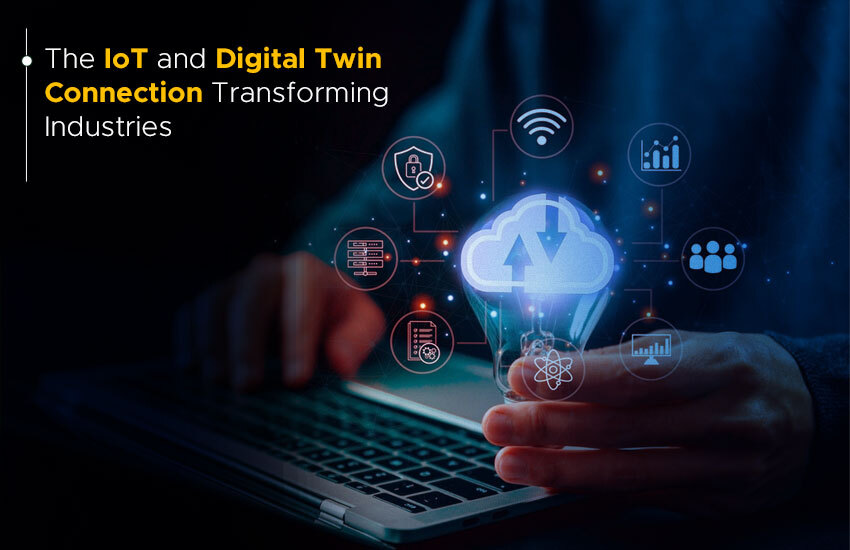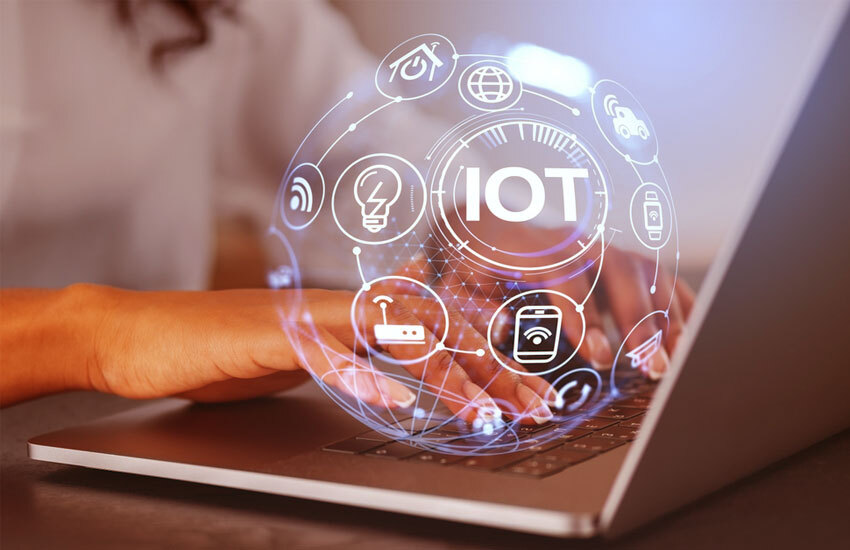
The convergence of IoT and Digital Twin Technology is transforming how industries interact with both the digital and physical worlds. The IoT connects real-world data via sensors, processors, and smart devices, revealing important insights into the physical world. When combined with Digital Twin solutions for industries, this data increases the value of Digital Twin IoT applications, making them critical for driving industrial transformation and innovation.
As we move forward, IoT will continue to play an important role in achieving the full potential of Digital Twin Technology in smart manufacturing solutions, predictive maintenance, and quality control automation. In several sectors, Digital Twin solutions are altering operational strategies and allowing organizations to monitor and optimize processes in real time.
A Digital Twin is a virtual counterpart of a physical asset, process, or system that represents its current status. Unlike simulations, which are hypothetical, a Digital Twin uses continuous data streams to replicate the real world. This real-time data measurement, provided by IoT-powered Digital Twin applications, sets Digital Twin Technology apart from other digital solutions.
For more information on digital twin, you can go through our informative blog, “What is Digital Twin Technology? Applications and Benefits Explained”!
The continual flow of real-world data is critical for sustaining the accuracy and efficacy of Digital Twin IoT Systems, particularly in industrial applications such as predictive maintenance and AI-powered supply chain optimization.
The functioning of a Digital Twin varies depending on the type, but the fundamental concepts remain consistent. IoT sensors, smart gadgets, and other technologies collect data from the physical world and send it to a digital twin system. By evaluating this data, AI-powered solutions select the most essential insights, allowing organizations to take preventative measures based on the real-time performance of their assets, processes, or systems.
For effective Digital Twin Technology applications, the data stream must be unbroken. Businesses without sufficient IoT infrastructure may struggle to establish dependable Digital Twin systems, therefore IoT is a critical component in Digital Twin Technology for Industrial Transformation.
Component Twins: These are individual components of a product or system, like gears or motors. Manufacturers can improve future designs and performance by tracking these components in real time.
Asset Twins: Asset twins are a more comprehensive version of a Digital Twin, replicating whole goods and allowing makers to understand how all components interact and perform over time.
System Twins: These represent the interplay of various assets or components that function together in a system. For example, a system digital twin could represent a whole production line, assisting in identifying inefficiencies and potential for development.
Process Twins: Process twins represent higher-level operations that occur within a manufacturing facility or other large-scale system. These are sophisticated Digital Twin Technology Applications that necessitate advanced infrastructure but provide valuable insights into operational improvement.
Digital Twin Technology's versatility allows it to be used in a variety of industries, but the essential premise stays the same: real-time data collecting via IoT is critical to its success.
Manufacturers have quickly implemented Digital Twin solutions for industries to optimize production, lower costs, and improve quality. IoT-powered Digital Twin applications can predict when machinery may fail, allowing for proactive maintenance and saving downtime. This guarantees that production lines continue to run efficiently, maximizing ROI and lowering repair costs.
In the automotive industry, Digital Twin Technology gives vital feedback regarding vehicle systems after they are on the road. Using real-time data from IoT sensors, automakers can monitor vehicle performance, identify potential flaws, and remotely update vehicles, resulting in increased customer satisfaction and fewer costly repairs.
In healthcare, Digital Twin Technology in IoT allows for the monitoring of medical devices, ensuring that they continue to function properly. AI-driven predictive maintenance powered by IoT detects flaws in equipment before they become critical, ensuring that life-saving devices are constantly available and operational.
IoT and Digital Twin solutions are rapidly assisting companies in minimising their environmental effect. Cities can improve their sustainability efforts by building a Digital Twin of a city, which optimizes energy flow, reduces waste, and predicts environmental reactions. This is consistent with the wider digital transformation goals of improving operational efficiency and customer experience by lowering costs and environmental footprints.

The synergy between Digital Twin Technology and IoT systems is what makes it so powerful. The IoT collects and transmits data from the physical world, while the Digital Twin transforms that data into actionable insights. This dynamic relationship enables firms to monitor performance, anticipate problems, and optimize operations for improved efficiency, all while driving digital transformation.
For example, organizations seeking to execute a digital strategy can use IoT and Digital Twin integration to gain real-time information into customer behavior, machine performance, and environmental conditions. This enables data-driven decision-making and more agile transformation methods, resulting in improved operational outcomes and customer engagement.
In industry, the IoT and Digital Twin connection provides numerous benefits, particularly in predictive maintenance. Explore our blog, “The Role of Digital Twins in Predictive Maintenance for Manufacturers”! The ability to monitor assets in real time allows firms to cut downtime and maintenance costs by resolving problems before they worsen. This leads to increased quality control automation and better resource utilization.
Furthermore, by incorporating Digital Twin Technology into manufacturing processes, organizations obtain deeper insights into production workflows, resulting in improved supply chain optimization with AI and faster time-to-market. Reducing time-to-market can provide a substantial competitive advantage by allowing businesses to respond more swiftly to client requests and market developments.
The integration of AI into Digital Twin systems enables enterprises to fully leverage data generated by IoT sensors. For example, AI-driven solutions in predictive maintenance provide early warnings about possible faults, whereas AI algorithms enhance smart manufacturing solutions by optimizing machine performance and minimizing mistakes.
AI's continuous data analysis enables organizations to make more informed operational decisions, while data automation frees up valuable resources, allowing people to focus on high-value activities. In this approach, IoT and Digital Twin Technology are critical components of a company's digital transformation plan, increasing productivity and profitability.
The combination of IoT and Digital Twin Technology is transforming the landscape of industrial operations. From smart manufacturing to predictive maintenance, IoT-powered Digital Twin applications are accelerating industrial innovation and change. Businesses may use the real-time insights given by IoT to optimize their operations, minimize downtime, improve product quality, and ultimately increase ROI. As sectors expand, the IoT and Digital Twin connection will play an increasingly important role in determining the future of manufacturing, healthcare, automotive, and sustainability.
By adopting this tremendous synergy, firms may gain a competitive advantage, improve operational efficiency, and provide improved customer experiences through enhanced data-driven decision-making.
Let’s connect: www.modelcamtechnologies.com
Email: sales@modelcamtechnologies.com
Mobile no : +91 8237016167
©Copyright 2025. All rights reserved by Modelcam Technologies Private Limited PUNE.